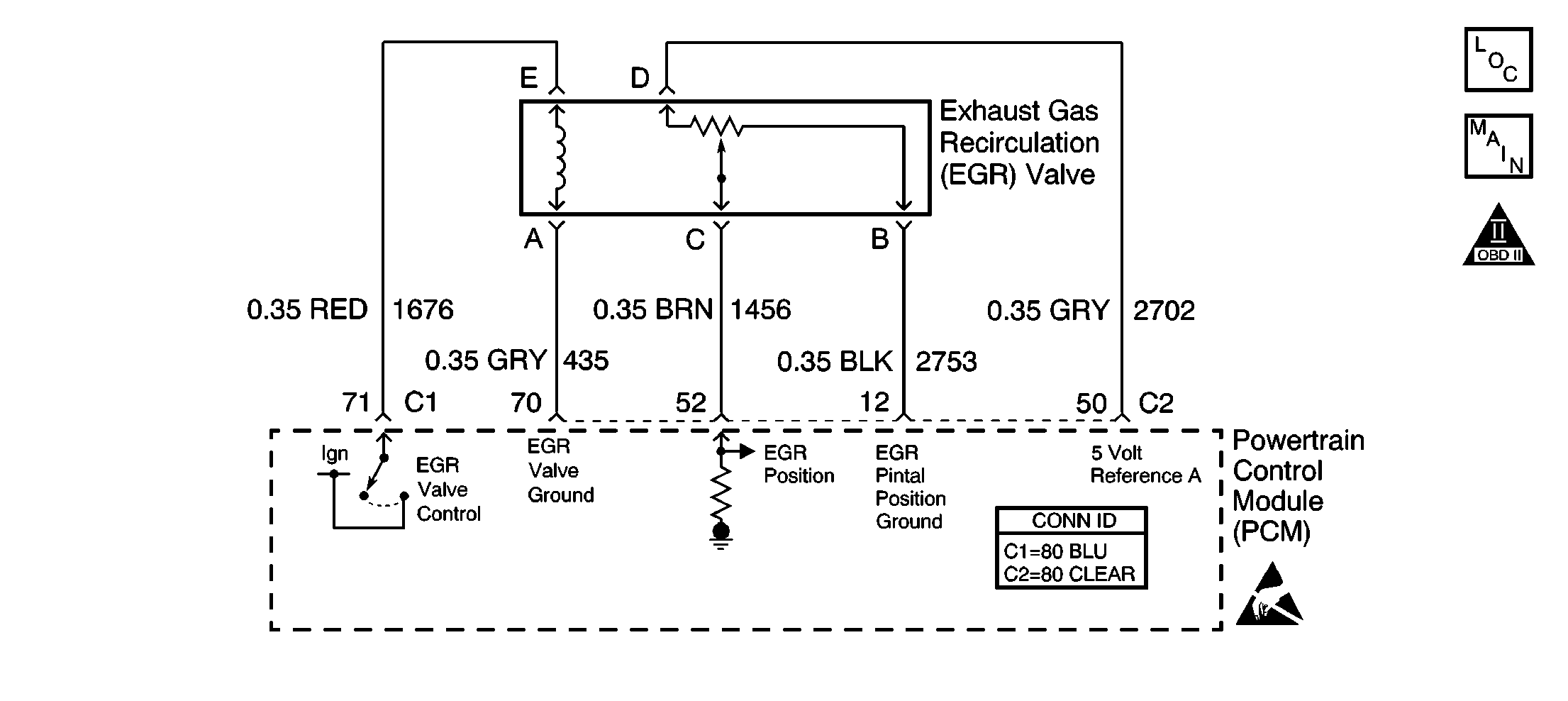
Circuit Description
The PCM controls the movement of the EGR valve using the EGR control circuit. The PCM monitors the pintle position input to make sure that the valve responds to the commands from the PCM. With the key turned ON, the PCM learns an EGR closed valve pintle position. When the PCM commands the valve closed, the PCM compares the learned closed EGR valve pintle position to the actual EGR position. If the actual EGR position indicates an open valve when the PCM has commanded the valve closed, DTC P0404 will set.
Conditions for Running the DTC
| • | The system voltage is more than 11 volts. |
| • | TP sensor, VSS, Misfire, IAT sensor, MAP sensor, Idle Speed, Fuel Injector, ECT sensor, CKP sensors, or MAF sensor DTCs are not set |
| • | The EGR is enabled. |
Conditions for Setting the DTC
The actual EGR position is 20 percent less than the desired EGR position.
Action Taken When the DTC Sets
| • | The PCM illuminates the malfunction indicator lamp (MIL) during the second consecutive trip in which the diagnostic test runs and fails. |
| • | The PCM stores the conditions present when the DTC set as Freeze Frame/Failure Records data. |
Conditions for Clearing the MIL/DTC
| • | The PCM will turn the MIL OFF after the third consecutive trip in which the diagnostic runs and passes. |
| • | The history DTC will clear after 40 consecutive warm-up cycles have occurred without a malfunction. |
| • | The DTC can be cleared by using the scan tool Clear DTC Information function. |
Diagnostic Aids
Check for the following conditions:
| • | Excessive deposits on the EGR pintle or seat. |
| Deposits may interfere with the EGR valve pintle extending completely. |
| Deposits in the pintle seat area may cause the pintle to stick. |
| • | Poor connections at the PCM or the EGR. |
| Refer to Testing for Intermittent Conditions and Poor Connections in Wiring Systems. |
| • | A damaged harness. |
| Inspect the wiring harness for damage. Refer to Wiring Repairs in Wiring Systems. |
Reviewing the Fail Records vehicle mileage since the diagnostic test last failed may assist in diagnosing the condition. The information may help determine how often the condition occurs that caused the DTC to set.
Test Description
The numbers below refer to the step numbers on the diagnostic table.
-
Verifies that the malfunction is present.
-
Attempts to duplicate the malfunction using the stored failure conditions.
Step | Action | Values | Yes | No | ||||||
|---|---|---|---|---|---|---|---|---|---|---|
1 | Did you perform the Powertrain On Board Diagnostic (OBD) System Check? | -- | ||||||||
|
Important: If any of the following DTCs are set, diagnose the other DTC first.
Does desired EGR position remain close to actual EGR position at all commanded positions? | -- | |||||||||
Does the scan tool indicate DTC P0404 failed last test? | -- | Go to Diagnostic Aids | ||||||||
4 |
Is the test lamp ON? | 100% | ||||||||
5 |
Is the test lamp ON? | -- | ||||||||
6 |
Does the scan tool indicate EGR near the specified value? | 100% | ||||||||
7 |
Did you find and correct the condition? | -- | ||||||||
8 |
Did you find and correct the condition? | -- | ||||||||
9 |
Did you find and correct the condition? | -- | ||||||||
10 |
Did you find and correct the condition? | -- | ||||||||
11 | Replace the EGR valve. Refer to Exhaust Gas Recirculation Valve Replacement . Is the action complete? | -- | -- | |||||||
12 |
Important:: The replacement PCM must be programmed. Replace the PCM. Refer to Powertrain Control Module Replacement/Programming . Is the action complete? | -- | -- | |||||||
13 |
Does the scan tool indicate DTC P0404 passed? | -- | System OK |
